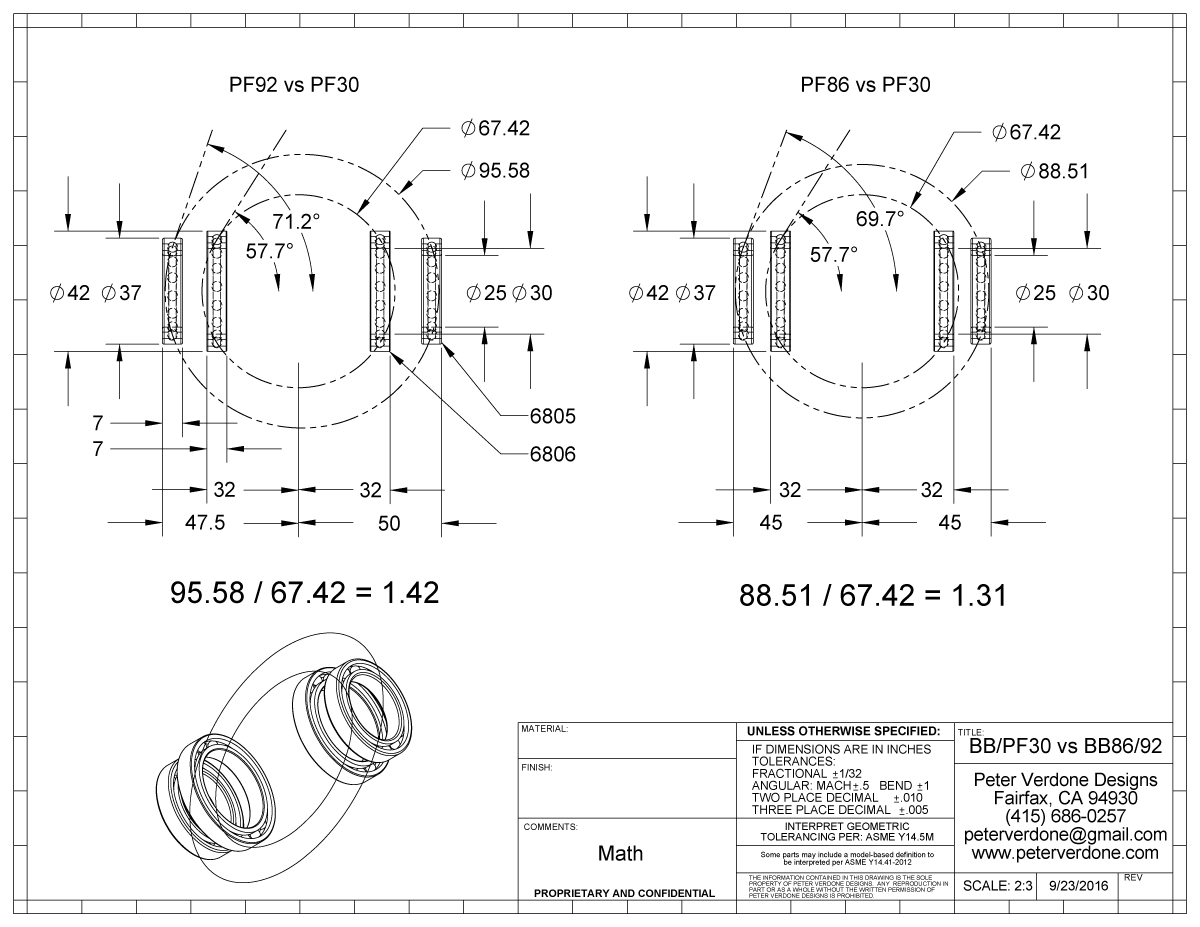This is a bit of an update post.
I posted a graphic online back in 2011. It showed the comparative leverage between a BB30/PF30 bottom bracket bearing configuration and a PF4186/T3568. It made it instantly obvious that geometrically, the PF4186/T3568 was 31% stronger than the larger, heavier BB30/PF30 configuration. The bearings had a superior working angle and would roll more efficiently.
I felt great about this calculation and tried to share it with other framebuilders. Not many would listen. The rush for !OVERSIZED! and carbon spindles out weight simple engineering principles. The sales guys were winning. I kept working with PF92 as almost everyone went to PF30 or entrenched into the antique BSA threads.
Over the years, elaborating on the graphic, I’ve said to people, “and that isn’t even comparing PF4192. It must be 50% stronger…”
It’s finally time to check.
So,PF4192 is 42% stronger (geometrically) than PB30/PF30. The already great working angle of 69.7 degrees goes up 71.2 degrees for even more rolling efficiency. A 13.5 degree improved angle. That’s huge!
Many people are crying out against press fit bottom brackets these days. Companies like Specialized are dropping if from some of their models. This hasty retreat is just as irrational and crazed as the desire to adopt the failed BB30/PF30 platform. People have blamed all press fit configurations rather than the ones that have inferior engineering to even T3568/73.
Here we are in 2016. PF4186/92 is being used by most of the largest companies in cycling: Giant, Trek (variant), Scott, Kona, Pivot, YT, and more.
Reason is scarce in cycling. Let’s just not stifle good design for mistakes of fools.
The good news about all of this…I can finally buy my bottom bracket shells from Paragon Machine Works for the first time since 2008.


